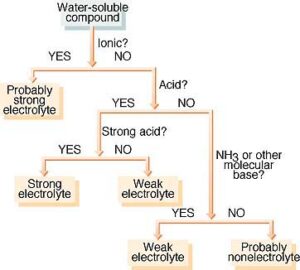From a practical standpoint, net income tells you how much profit a business is actually earning. It’s entirely possible (and rather common) for businesses to have positive gross income but to be unprofitable on a net income basis. The following approach is solely a recommendation for tax year 2021, and the IRS recognizes that partnerships may have taken other approaches. The IRS appreciates comments on this approach and whether there are other approaches to reporting OID on Part X of Schedules K-2 and K-3. The IRS will take these comments into account for the tax year 2022 Instructions to the Schedules K-2 and K-3. In such instances, the partnership should provide the needed information and may use Part VII to do so.
IRS gears up to go after ‘complex partnerships’ despite lack of clear definition – The Hill
IRS gears up to go after ‘complex partnerships’ despite lack of clear definition.
Posted: Mon, 31 Jul 2023 09:30:00 GMT [source]
Gross salary is the accumulated amount of compensation discharged by an employer or company towards the employment process of an individual. The overall compensation is nothing but the cost to the company or CTC to employees. Gross salary is the monthly (or annual) salary paid to an employee without any tax deductions. Perquisites may include benefits offered over and above the basic salary. However, there could be non-monetary components also – paid as perquisites to employees in some companies.
This guide is intended to be used as a starting point in analyzing an employer’s payroll obligations and is not a comprehensive resource of requirements. Gross income is the amount of money a business makes by selling a product it produces before any other costs of doing business are taken into consideration. As an example, if a business spent $2 million to produce its products and its total sales of that product were $5 million, it would have a net income of $3 million. The net amount of something is what is left after subtracting certain items. Net income refers to the amount of money left after subtracting business expenses, taxes, and other items.
What Are Gross Wages, and How Do You Calculate Them?
Employers start with net pay and calculate the gross pay that would result in the desired take home pay after all taxes and deductions. Gross salary includes basic salary, HRA, and other allowances, whereas net salary is gross salary minus income tax, professional tax, and provident fund. You, as an employer, should provide a breakup of all the components that constitute the gross salary in monthly payslips. The amount that an employee takes home after all such deductions is termed net salary. Say your hourly employee makes $15 an hour and worked 70 hours the past two weeks. Multiply their hourly wages by the number of hours they worked during the period to find their gross pay.

However, if the wages earned during the week of December are not paid until January 5, the wages will be included in the W-2 form for the year in which they are paid. The system is also a boon for employees who are often in the dark about payroll information and have to spend time with the relevant department and managers to get answers to their queries. With RazorpayX Payroll, the HR team can quickly update employee details on the system and provide employees access to their information. Onboarding of new employees is done quickly, while it also minimizes inquiries and consultations with the other departments involved in payroll preparation. As we can see, there are complex calculations involved in preparing payroll for a company’s employees, and it gets more intricate as the size of the company grows. Basic salary constitutes only the core amount received by the employee.
Gross Wages Definition
Compare this with an employee who doesn’t have any pretax deductions or nontaxable wages. This employee’s gross wages and taxable gross wages will be the same amount because they have no pretax deductions and no nontaxable wages to lower their taxable amount. The net income is a business or individual’s gross income minus any withholdings, business expenses, or other costs. For example, if a business has a gross income of $3 million but pays $1 million in wages and benefits, $250,000 in rent, and $250,000 in taxes, it would have a net income of $1.5 million. If you receive a gross monthly income of $5,000 on your paycheck, but $2,000 in taxes and various other deductions are removed, your net income is $3,000.
- The Ascent is a Motley Fool service that rates and reviews essential products for your everyday money matters.
- This differs from gross income which limits what can be deducted from total revenue earned.
- Gross income is a line item that is sometimes included in a company’s income statement.
- Calculate the employee’s gross pay by multiplying their regular hourly wages ($25) by the number of regular hours worked (40).
These amounts should also be entered as a negative adjustment in column (f) to ensure that the total OID reported on Part X reconciles with OID reported on Schedule K (Form 1065). The partnership should take a similar approach for reporting distributive share amounts to a foreign partner on Schedule K-3. Section 904 generally limits the foreign tax credit to the taxpayer’s U.S. tax rate multiplied by its foreign source taxable income. Foreign source taxable income is foreign source gross income less allocable expenses. In general, the partnership or S corporation must complete the Schedules K-2 and K-3, Parts II and III because the source of certain gross income is determined by the partner or shareholder.
Get pricing specific to your business
If an hourly employee works overtime, include the overtime pay in their gross pay. A gross wage is the amount an employee earns as compensation for services performed for an employer prior to all payroll deductions for taxes, benefits or wage garnishments. It’s also the value that’s commonly referred to when discussing compensation with new hires. Understanding the role that gross wages play in payroll processing is essential to paying employees correctly and complying with applicable employment laws. Your employer should provide you a Form W-2, Wage and Tax Statement showing your total income and withholding. You must include all income and withholding from all Forms W-2 you receive on your tax return, and if filing jointly, you must also include all income and withholding from your spouse’s Forms W-2.
The approach to determining gross income for an individual is slightly different than the approach for a business. Although both calculations are similar, each type of entity uses different classifications of income and expenses. The compensation that employees get to take home depends on a variety of payroll deductions, some of which may be voluntary, whereas others are mandatory. For example, it is possible (but not common) for a business’s gross income and net income to be the same number if the only cost of doing business is the cost of making the product sold. And in rare cases, it can be possible for net income to be greater than gross income if a business has a large amount of non-operating income, such as interest. However, in the vast majority of cases, net income is less than gross income.
Understanding Gross Income
When you add gross wages to your labor burden — employer-paid payroll taxes and benefits — you’re given a full picture of the cost of having employees. Your gross income can be found on a pay stub as the total amount of money you earned in a given period before any deductions or taxes are removed. You can also see your total gross income on your year-end W2 or 1099. Alternatively, you can calculate your gross income as (1) your monthly salary before taxes or (2) the number of hours you will work in a given month multiplied by your hourly pay rate. Apple also incurred $6.3 billion of research and development costs, $6.2 billion of selling, general, and administrative costs, and $5.1 billion for income taxes. All three of these expenses are excluded when calculating gross income.
IRS Continues To Focus On Fraudulent Employee Retention Credit Claims – Forbes
IRS Continues To Focus On Fraudulent Employee Retention Credit Claims.
Posted: Thu, 27 Jul 2023 06:43:53 GMT [source]
In fact, determining wage payment and gross-to-net is a top reason why employers outsource payroll. Whereas gross wages represent an employee’s total remuneration, taxable gross wages are wages that are subject to taxation. Often, an employee’s gross wages and taxable gross wages will not be the same, due to pretax benefits — such as a Section 125 health plan. For households and individuals, gross income is the sum of all wages, salaries, profits, interest payments, rents, and other forms of earnings, before any deductions or taxes. It is opposed to net income, defined as the gross income minus taxes and other deductions (e.g., mandatory pension contributions). A partnership generally reports OID on Schedules K and K-1 (Form 1065) in the taxable year the OID accrues.
Hourly employees
For companies, it is the revenues that are left after all expenses have been deducted. This is different than gross income which only includes COGS and omits all other types of expenses. Business gross income can be calculated on a company-wide basis or product-specific basis. As accounting definitions of contra-revenues vs expenses chron.com long as the company is using a chart of accounts that allows tracking of revenue by product and cost by product, a company can see how much profit each product is making. Sections 80C and 80D are the most extensively used options for saving income taxes by salaried employees.
- The net income is a business or individual’s gross income minus any withholdings, business expenses, or other costs.
- Examples of deductions from gross wages are the social security tax, Medicare tax, garnishments, health insurance, dental insurance, life insurance, pension contributions, and charitable contributions.
- Gross income for an individual—also known as gross pay when it’s on a paycheck—is an individual’s total earnings before taxes or other deductions.
- Volatility profiles based on trailing-three-year calculations of the standard deviation of service investment returns.
It’s the first number you calculate, and you use gross pay to calculate taxes like Medicare and Social Security, collectively called FICA. If you’re running payroll for a restaurant, your employees’ tips get added to the wages you pay them. The offer letter listed my start date and my hourly pay, also called a gross wage rate. Knowing I’d soon get paid $8.25 an hour — then the New Jersey minimum wage — felt like a windfall.
What Is the Difference Between Gross Amount and Net Amount?
Net pay is often referred to as take-home pay because it’s the actual amount that employees “take home” in the form of a live paycheck or electronic deposit to their bank account or paycard. For a business, net income is the total amount of revenue less the total amount of expenses. However, net income also includes selling, general, administrative, tax, interest, and other expenses not included in the calculation of gross income. Gross income is a much higher view of a company, while net income incorporates every facet of cost.

Divide your employee’s annual gross pay by their monthly pay frequency (12) to find their gross wages per pay period. After calculating gross wages, you need to subtract taxes and other deductions. Some taxes, like FICA, are calculated as a percentage of gross wages.